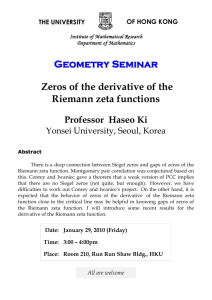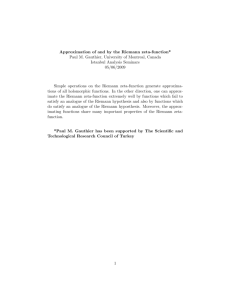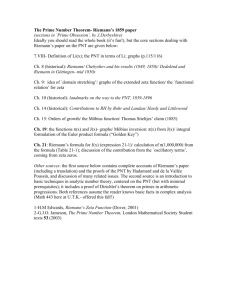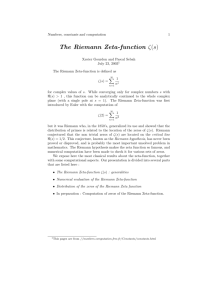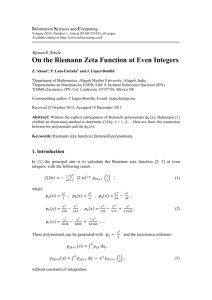The Riemann Zeta function and associated polynomials
advertisement
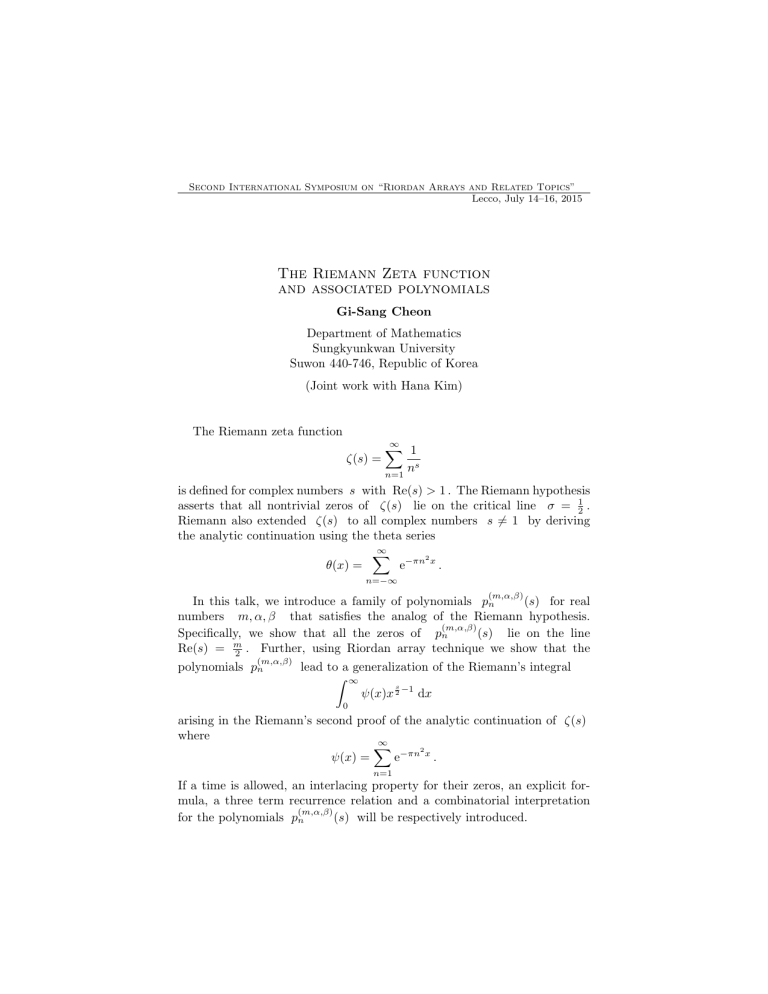
Second International Symposium on “Riordan Arrays and Related Topics” Lecco, July 14–16, 2015 The Riemann Zeta function and associated polynomials Gi-Sang Cheon Department of Mathematics Sungkyunkwan University Suwon 440-746, Republic of Korea (Joint work with Hana Kim) The Riemann zeta function ζ(s) = ∞ ∑ 1 s n n=1 is defined for complex numbers s with Re(s) > 1 . The Riemann hypothesis asserts that all nontrivial zeros of ζ(s) lie on the critical line σ = 12 . Riemann also extended ζ(s) to all complex numbers s ̸= 1 by deriving the analytic continuation using the theta series ∞ ∑ 2 θ(x) = e−πn x . n=−∞ (m,α,β) (s) for real In this talk, we introduce a family of polynomials pn numbers m, α, β that satisfies the analog of the Riemann hypothesis. (m,α,β) (s) lie on the line Specifically, we show that all the zeros of pn m Re(s) = 2 . Further, using Riordan array technique we show that the (m,α,β) polynomials pn lead to a generalization of the Riemann’s integral ∫ ∞ s ψ(x)x 2 −1 dx 0 arising in the Riemann’s second proof of the analytic continuation of ζ(s) where ∞ ∑ 2 ψ(x) = e−πn x . n=1 If a time is allowed, an interlacing property for their zeros, an explicit formula, a three term recurrence relation and a combinatorial interpretation (m,α,β) for the polynomials pn (s) will be respectively introduced.



